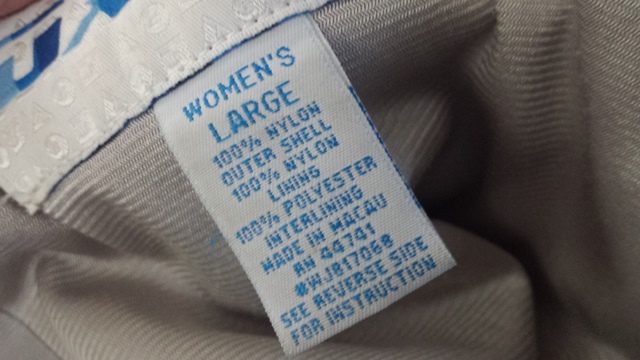“The clothing industry is the second largest polluter in the world...second only to oil,” said Eileen Fisher, an extremely distinguished and successful American fashion designer. Ironically, she made this statement while on a podium being honored by Riverkeeper as she received an environmental award for her commitment to environmental causes.
Fashion is a complicated business involving long and varied chains of production spanning over many stakeholders and continents including the processes for raw material, textile manufacturing, clothing construction, shipping, retail, use and ultimate disposal of the garment. A general assessment must take into account not only obvious pollutants - the pesticides used in cotton farming, the toxic dyes used in manufacturing and the astounding amount of waste created by discarded clothing – but also the excessive amount of natural resources used in extraction, farming, harvesting, processing, manufacturing, and shipping.
While cotton, particularly organic cotton, might seem like a smart choice, it can still take more than 5,000 gallons of water to manufacture just a t-shirt and a pair of jeans. Synthetic, man-made fibers, while not as water-intensive often have issues with manufacturing pollution and sustainability. The production of polyester for example, uses nearly 70 million barrels of oil each year. Across all textiles, manufacturing and dyeing of fabrics are chemically intensive. A quarter of chemicals produced worldwide are used in textiles and the industry is the second largest polluter of clean water after agriculture.
The twentieth century saw the pace of fashion transform at a hastened rate due to mass communication and the growing productivity for methods of distribution. Different clothing styles contend for recognition and regard. The speed at which styles change, gain and lose popularity has ominously increased. This gave birth to the concept of ‘fast fashion’. The meteoric rise of fast fashion, particularly in the last decade is responsible for the devastating impact this industry is having on our planet both socially and environmentally.
As consumers we are too busy to become curious. Have you ever asked yourself "whose hands made the clothes I am wearing today?" Have you ever thought about the power and influence we all have the moment we purchase a piece of clothing?
Approximately 80% of garment workers are female teenagers and young adults, women and girls between the ages of 18-25. We are talking about young woman sitting on assembly lines sometimes in inhumane conditions for exhausting and soul-destroying working hours, 7 days a week earning next to nothing. We hypocritically give it our blessing every time we go shopping for a new blouse or skirt or t-shirt and don't even think about it or give it a second thought. We never think of her do we? Somehow, we are programmed not to think. When the powerful multi - billion-dollar fashion industry sells us dreams of romance and love and empowerment through the clothes we buy and wear do we not become accomplices to the human pain and cruel greed which is born every day, somewhere far away but really as near as the clothes we are now wearing?
The next time you are at home, a little introspection if you please. Open your closet, look inside and become aware of the human presence behind all those fashion labels. What is it that those young girls are yearning for that is missing in their lives and what would life be like for them if that empty space was filled?
Designing with people and the planet in mind and mapping supply chains from farm to factory is what will transform the industry. It’s about changing the way we perceive the cost of clothing. Ellen Ruppel Shell, author of Cheap, wrote, "price tells us volumes about marketing strategies, government policies and even variations in the growing season. Economic realities, such as the efficiency of workers and factories are all reflected in price. Social and political realities, such as environmental degradation and human rights violations, are reflected as well." We need to have vision. When walking into a store, see past the clothing and imagine the fields of cotton and the water and chemicals which all go into making our clothing. Kristi Cameron said “there are so many pieces of the natural world and of our human system in the clothes we are wearing every day, as consumers we need to internalize this to change our perception of the significance of our clothing.”
